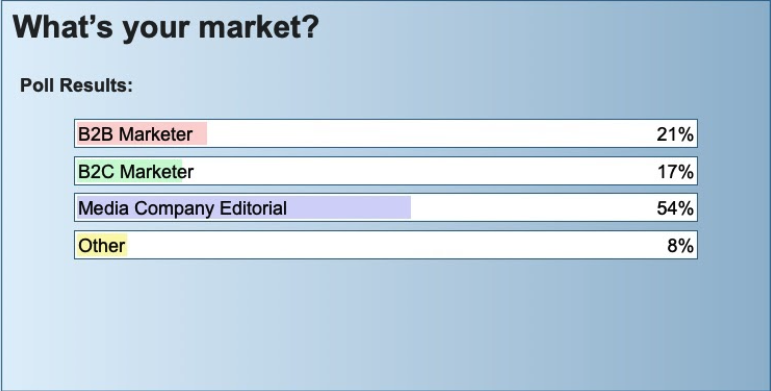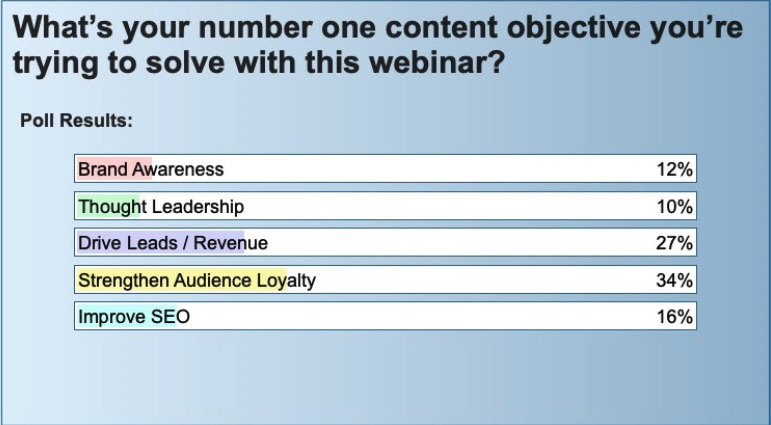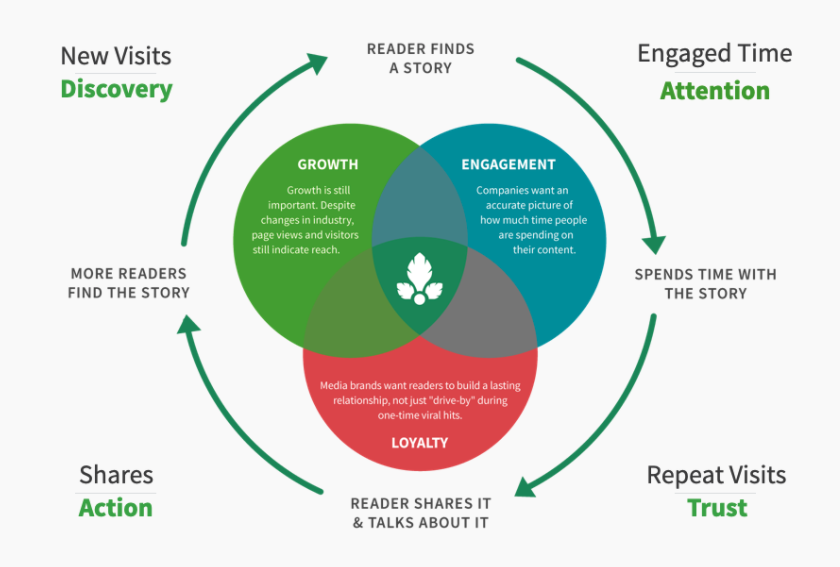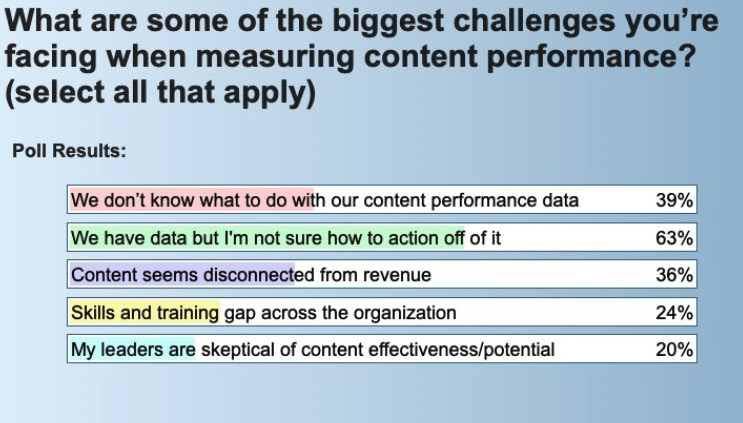Content Analytics Made Easy | Webinar Recap

We can all agree that this year has brought a TON of unforeseen challenges to the workplace, but at Parse.ly we believe that making sense of your content marketing analytics shouldn’t be one of them. With this in mind, our Chief Product Officer and Co-Founder, Andrew Montalenti, and Editorial Director of Growth at Quartz, Phoebe Gavin, caught up on a webinar last week to share their expertise and discuss how to make content analytics easy and how to use content data to make an immediate impact for your business.
Whether you’re a media professional or a B2B/B2C marketer, a seasoned pro with a full grasp on your content analytics or a novice content strategist looking for a place to start, this webinar will be a great resource for you and your team. Given the nature of the topic I wanted to provide an overview of the discussion and answer a few of the key questions brought up by attendees during the webinar.
Table of Contents
- Content analytics in media vs. B2B + B2C marketing
- People-first content generation
- Data making things easier
- Content and the audience journey
- Starting with a data-driven foundation
- Where should you start?
Content analytics in media vs. B2B + B2C marketing
The emergence of content analytics was a response to the media industry’s shift to digital and their new need for visibility into digital audience engagement. Over the past few years, however, we’ve seen more and more B2B and B2C brands using content analytics very similarly to how media companies do as they put more focus on creating quality content that fosters genuine relationships with their customers. These days, content analytics are leveraged by both media companies and brands, a split that is represented in Parse.ly’s list of clients along with the list of attendees to this latest webinar.

About half indicated that they work in the editorial department of a media company while just under half indicated that they work in B2B or B2C marketing. Over the years it’s become clear to us at Parse.ly that strategies for using content analytics cross over very well between the two worlds. In fact, during the webinar prep, Phoebe and Andrew talked about their favorite B2B marketing blogs and how they look there for strategies to use in the media space as well as their favorite media strategies that Andrew and the Parse.ly business team share with our B2B/B2C marketing clients and prospects.
A lot of media companies actually run editorial teams like B2C marketing groups. Though their overarching goal may not be directly selling products or services, ultimately they’re generating revenue from selling advertising and subscriptions. It’s inspiring for us to see marketing teams learning from media companies and vice versa as we monitor these types of overall trends in the content ecosystem.
People-first content generation
Now, whether you’re working on content for a media company or for a brand, your main focus should be on the fact that your audience is made up of real people who have real questions to answer. It’s your job to help them answer them, even if you don’t have a big newsroom to lean on. At the end of the day they’re coming to the internet, whether through social, search, or other routes, to find information to help them solve problems they have in their everyday lives. If your content helps solve those problems, they’re going to feel closer to you and be more likely to subscribe, buy your products and services, and return to your website.
At Parse.ly we get asked a lot for more insight into the big tech platforms, and though we do provide data studies and internet research on this topic, we think that as a whole, content professionals need to think less about subjugating themselves to these distribution platforms and more about focusing on how to solve user problems. We advocate for approaching content generation with a people-first, as opposed to a brand-first or self- first, mindset. Less selling and more solving is the way to form valuable, long-lasting relationships with your audience and customers. Don’t talk about yourself, talk about what is special about your company that provides unique value to your audience.
Andrew mentioned that there has been a major reckoning in the way digital marketing works in that people trust display ads much less than they used to. Now companies like Quartz are trying to use more first-party methods and shift away from relying on ad revenue. Marketers are no longer just allocators of capital to different channels. They’re trying to communicate with their audience in a helpful way, being very conscious never to come across as spam.
And how do you make sure you’re creating useful content with a people-first mindset? That’s where data comes in. Content analytics data represents people, what they’re doing, and what problems they have. The numbers are actions and the actions are people. If you can think about data more in terms of what people are doing and less around how you’re getting judged, you’re off to a great start. When you start using data to inform your content creation, you’re likely to be perceived as a magician by your audience because you’re so helpful.
At Parse.ly we use our content analytics on our own marketing content to see what’s successful on our website and understand what is actually helping people. For example, we know that if we put out a product release blog post it only matters a bit to our audience, but if we put out a data study that provides real value to our audience they find it much more useful.
Data making things easier
Looking back just a few years, the majority of people working with content didn’t have much insight at all into what impact their efforts were making. Usually they had some analytics tool installed but really just tracked page views with a high level traffic report. Valuable data on whether their audience was returning, engaging, sharing, or converting was absent or inaccessible.
Now there is so much more we can measure, but some journalists and content marketers are tentative to incorporate data into their work because they don’t want it to stifle their creative edge. The idea with making data-driven content decisions isn’t to blindly follow the numbers and ignore your intuition, but instead to use data to make things easier, as a way to inspire creativity, test new ideas, and validate your instincts.
One of the reasons we created Parse.ly in the first place was that journalists were really yearning to get direct feedback from their audience, but that was very challenging with the technology that existed at the time. Content analytics solutions like Parse.ly serve the purpose of giving writers and creators a closer connection with their audience through data, making the feedback loops smoother and the iteration processes easier.

We asked the webinar audience what their main goals were in regards to their current content programs, and two objectives seemed to be top-of-mind: strengthening audience loyalty and driving leads/revenue. Both of these objectives are directly linked to taking a people-centric approach to content by listening to the data. What gets people coming to your site habitually and spending lots of time with your content? What content gets people converting to subscribers or customers?
We’ve seen that optimizing for loyalty and deep engagement metrics like returning visitors and engaged-time is extremely helpful for people working towards these goals because these metrics depict natural human interaction with content. We’ve found that engaged-time is often disconnected from posts that are just getting high traffic and that returning visitors have much different needs from one-timers. These nuances are what have made these metrics a staple in people-centric content and marketing programs like the one at Quartz.
Even driving leads and revenue, which is especially important in the B2B marketing space, has to do with people and what they care about. This is where you should use a carefully developed tagging structure to look at what content and what factors within your control end up leading your audience to a high value revenue action later on in their journey. Tracking content conversions and doubling down on the content types that lead to those actions like newsletter signups, offsite purchases, paid subscriptions, paywall clicks, demo requests, content downloads, or webinar signups is an easy way to optimize for that goal.
Content and the audience journey
As we discussed at length in our last webinar, content and content analytics should play a large role in your audience’s journey through your website and marketing cycle. In order to optimize your content for your audience throughout their journey, we suggest thinking about it through the lens of the GEL model – growth, engagement, and loyalty, and mapping the metrics we mentioned earlier to each stage. The goal is to have your audience find your content, spend some time with it, gain trust with your company, make repeat visits, and share it with their network.

It’s important to embrace the idea that there are lots of personas and lots of journeys.
Phoebe talked about how at Quartz she and her team started with a more simple funnel focused solely on driving awareness and getting newsletter signups, but they soon realized that in order to really optimize for this goal, they needed to make sure they were serving content to all of the different journeys people take to become subscribers.
They created a more sophisticated funnel that splits their audience into three segments: drive-by readers, loyal followers, and subscribers. The goal now is to turn drive-by readers into loyal followers and loyal followers into subscribers. Phoebe and her team use content analytics to monitor these segments at different stages of their journeys so they can be sure that Quartz has been a part of their lives for a long time before they ever see a paywall.
Starting with a data-driven foundation
We asked the webinar audience what some of the biggest challenges they’re facing were when measuring content performance, and the vast majority of people answered that they have data but they’re not sure how to action off of it. This doesn’t come as much of a surprise to us at Parse.ly because it’s what we’ve been helping content teams improve on for years. Phoebe offered some advice on how to get the ball rolling using data in your content program.

She recommends you start by looking at your top-line strategic objectives as an organization for the next 6 months or year, and if you don’t have clear goals set at the moment, set them. Then you can begin looking at how you’ll measure your progress. Define the KPIs that will help you reach those goals and outline the data you’ll measure in order to track those KPIs. If you’re missing data that will be necessary in tracking them, find a way to get access to it. Build an overall plan based on high-level objectives, define the milestones in between with measurable KPIs, and stay focused on the data that helps you track them.
For example, a big goal that Phoebe and her team at Quartz set was to revamp their content archive and get more search traffic from people who were likely to become subscribers. They determined that the KPIs that would help them get there were conversions from search and page views from search, and they knew they could access that data from Parse.ly. Once they were able to understand which stories were bringing in the ‘right’ people from search using this strategy, they were able to brainstorm and develop follow up pieces based on those stories.
Where should you start?
So once you have your goals and KPIs set, test out ideas for reaching them by setting up low lift experiments to see what’s working with your audience. Pay attention to the results, because they will be what sends you and your content strategy in a new direction.
Phoebe and her team had questions about the usefulness of research projects versus newsletters, so they ran experiments to answer them. They produced a few deep dive, research type articles about specific companies and industries and found that not a ton of people read them but those who did spent an above average amount of time with them and many times ended up becoming subscribers. Seeing that their experiment was a success, they took the time to transform these articles into presentation decks that people could download for research in order to drive even more engagement and subscriptions for Quartz. This is how you can start with a KPI, run experiments, see what works, and then scale it up.
Given the climate in 2020, people’s digital consumption habits are changing rapidly so it’s more important now than ever to use content marketing analytics to inform your decision-making. Many people are dealing with intense emotions – sometimes looking for education and sometimes looking for distractions. Even if the assumption is that this behavior is temporary, looking at the data tells you which type of content to focus on at any given time.
Start creating content that is geared towards helping the people you’re trying to connect with and your company’s most important goals for next year. Make a plan and figure out how your data can support that. Chat with one of Parse.ly’s product specialists today about how we can help you along the way.